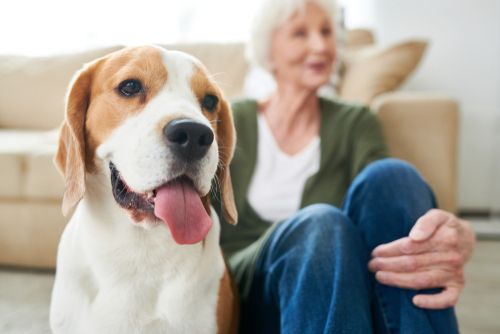
Letting children, especially young children, and pets, especially new ones, play can be a little nerve-wracking. The foremost worry is for the safety of the children, of course — it's more likely that an animal would physically hurt a child than the other way around. Unfortunately, kids can hurt pets too, and what's more, they can antagonize a pet to the point the animal will act out.
This is mostly due to two factors. First, children are still growing, learning, and testing boundaries, coupled with still learning how to verbalize their thoughts and needs. Second, pets can't verbalize at all, making it more difficult for them to communicate when they don't like something, want certain behaviors to stop, or are hurting. As a parent, you need to step in and fill this fundamental gap and help them understand each other.
Ensure new pets like kids
Keep in mind that some animals simply aren't comfortable around children, and that's okay. When adopting a new pet, especially if it's older, make sure to talk to the shelter or rescue organization staff to make sure the animal is safe to live with kids. Similarly, if you already have kids and kid-friendly pets but are ready to adopt a new pet, make sure to ask if the animal is also comfortable with other animals. Bringing a pet into a home where it's uncomfortable will only make them more and more stressed, and thus more likely to hurt someone.

Cats are known for being notoriously fussy creatures. They demand attention when it suits them, but reject snuggling with their owner when it doesn’t. They are picky eaters, can appear aloof and indifferent to their owners and seem pretty happy to go it alone most of the time.
This fussy attitude often even extends to their sleeping habits, and many owners have gone out and spent a considerable amount of money to provide a large, plush and expensive cat bed, only to find that their kitty refuses to sleep in it. But is she just being fussy, or is there an ulterior motive for this behavior?
According to animal behavior experts, most cats prefer to sleep and hang out in places with good vantage points, which comes from their natural survival instincts. A high position for sleeping or resting gives them an aerial advantage for spotting any potential dangers around them. Much of this instinct comes from their ancestry. Early cats were hunters that lived in the wild, and their climbing ability meant that they had somewhere to retreat to away from larger predators in addition to the capability of attacking smaller prey high up in the branches.

We are constantly being told that obesity levels are increasing worldwide and that we should act now in order to ensure our long term health. However, this problem doesn't just affect humans. A shocking statistic from the Association for Pet Obesity Prevention states that an estimated 54% of dogs and cats in the United States are overweight or obese.
(Source: Association for Pet Obesity Prevention, 2015)
Just like humans, pets who are overweight are at increased risk for a number of health problems including but not limited to:
Cranial cruciate ligament injury
Decreased life expectancy by up to 2.5 years
Heart and respiratory disease
High blood pressure
Insulin resistance and type 2 diabetes
Kidney disease
Osteoarthritis
Varying forms of cancer
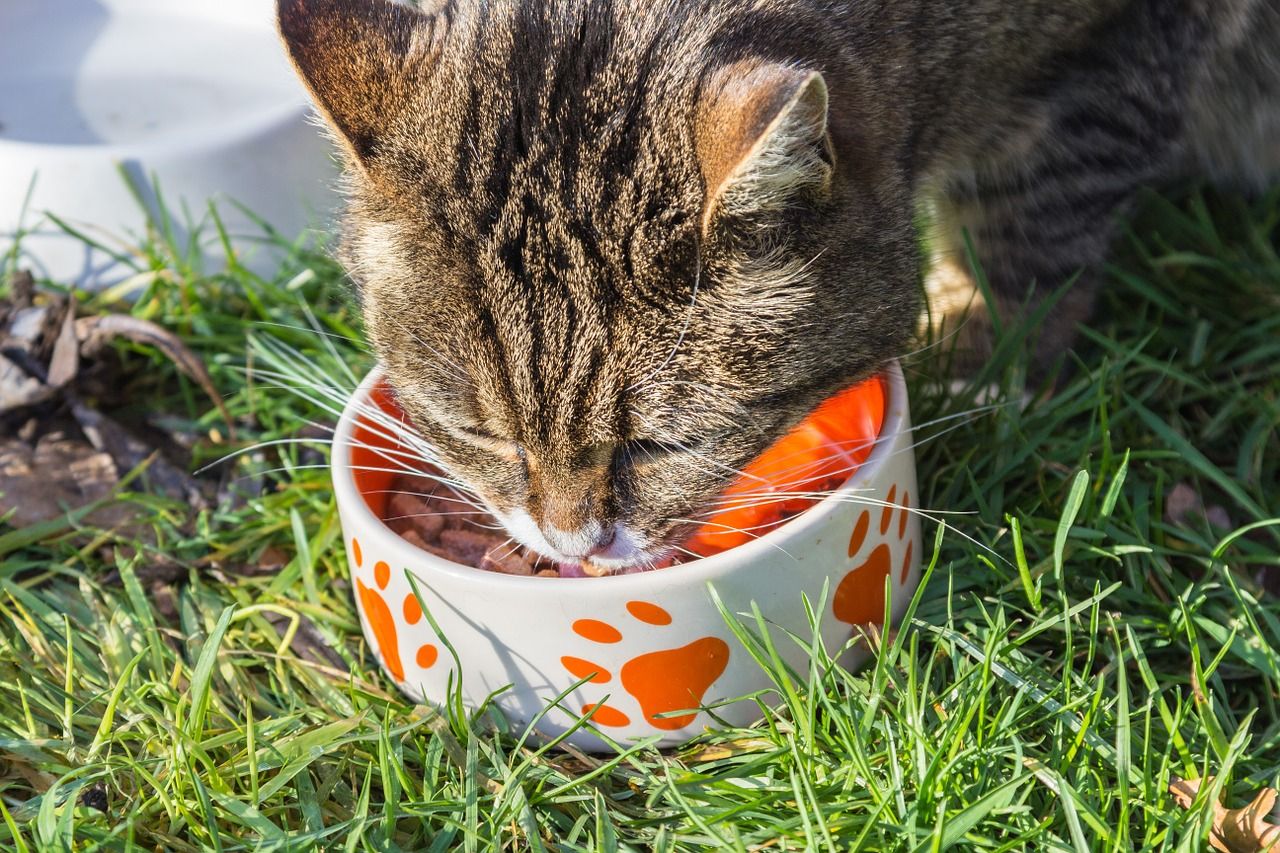
A healthy and balanced diet is essential for a healthy and happy pet. Not only will it provide your pet with enough energy for their day to day activities, but it is also vital for proper brain function, especially for animals in the early stages of their development.
One of the most important things to remember when it comes to feeding your pet is to feed them by ‘life-stage’. Nutritional requirements differ based on the animal's species and stage of life. For example, puppies around 12 weeks of age will require around 3 meals a day and it is not until they reach around 6 months of age that this amount should be reduced. That said, your animal may prefer smaller, more frequent meals, so the key to feeding your pet properly is understanding what works best for them.
Methods of Feeding
A popular method of feeding is known as ‘free-feeding’. This is where a bowl of food is left out so that a pet can eat as much or as little as they want in the frequency that they prefer. This works best for dry foods since they don't spoil as quickly as the wet variety. Unfortunately, some studies show that this method can result in over-eating and subsequent pet obesity, but it may be the best option for you if you cannot stick to a feeding schedule.
Scheduled, portioned feeding requires a strict routine that you need to be able to stick to. Your pet will know when meal times are and ensure that they are ready for them, such as when cats come indoors specifically at these times. This method limits the amount that your pet eats either by portion size or by time as some pet owners prefer to give their animals a specific time frame in which they must eat. This method also works well if you have pets that require medication to be mixed with their food, or have an animal on a calorie-controlled diet.
If you are unsure which method is right for your pet, please consult with your veterinarian who will be more than happy to provide advice.
General Feeding Advice
Do NOT offer home-cooked meals unless specifically instructed to do so by a veterinarian. Most home-cooked meals do not meet the complex nutritional needs of your pet. Instead, stick to specifically formulated pet foods.
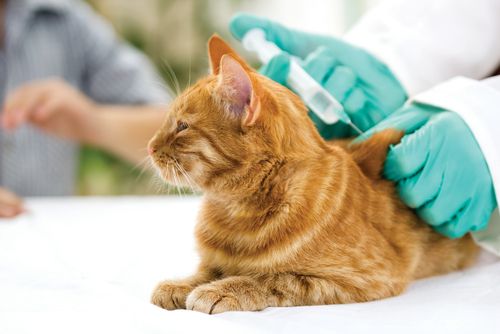
Regular vaccinations and examinations will help keep your pet healthy and happy. While your veterinarian will be able to advise you of the frequency that your pet should be examined, most recommend either annual or bi-annual visits. Since pets age an average of 7 times faster than humans, they are considered middle-aged by the time they reach 6/7 years old and larger breeds of dogs are often considered to be seniors by the time they reach 8.
Typical components of a wellness examination include:
Checking the central nervous center
Checking and cleaning the ears; treating if required
Checking joints and mobility
Checking skin and condition of coat
Checking urinary and reproductive systems
Dental examination
Eye examination
Listen to the heart
Listen to the lungs
Observation of alertness and response
Palpate the abdomen checking for painful areas and/or growths or tumors
Physical examination of the rest of the body for unusual lumps
Weight check
Other tests that your pet may be given include:
Heartworm testing (otherwise known as blood parasite screening)
Fecal testing, which allows the veterinarian to check for the presence of internal parasites such as hookworms, roundworms or whipworms.
Blood work which screens for infection or disease that may not otherwise be detected through a physical examination. Blood work also gives the veterinarian a comprehensive assessment of your pet's health.
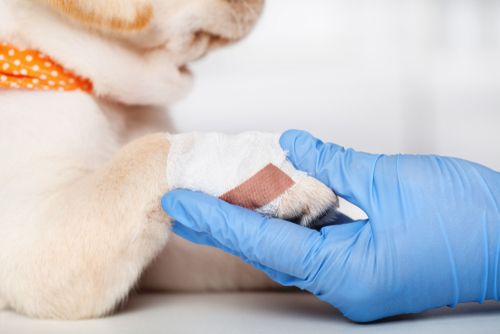
Accidents and emergencies don't just happen to humans, and while first aid is no substitute for emergency veterinary care, basic first aid knowledge can be crucial for treating certain injuries and in preventing symptoms or situations from worsening.
In critical emergencies, opting to administer first aid before heading to your veterinarian could make the difference between the life and death of your pet.
As a pet owner, it is your responsibility to try and ensure the safety and well being of your pet at all times. With that in mind, here is our guide to basic first aid for pets.
Bleeding (Externally)
External bleeding is typically the sign of a fight with another pet or an accident, and unless it is a severe wound and/or located on the legs, it can usually be dealt with relatively quickly and simply
In order to establish the site of the injury, you may need to muzzle your pet, as they may be in some pain. Once you have located the injury, press a thick, clean gauze pad over the wound and apply pressure until the blood begins to clot. It may take a number of minutes for the clot to gain enough strength to sufficiently stop the bleeding, so instead of checking every few seconds, hold the gauze in place for at least two minutes before lifting to check if the bleeding has ceased.
If your pet has severe blood loss from the legs, use a thin strip of gauze, elastic band or similar material to create tourniquet between the wound and the body. Once it is in place, you should cover the wound with a gauze pad and continue to apply gentle pressure.
Loosen the tourniquet for about 30 seconds every 15 to 20 minutes so that you don’t cut off the circulation from the wound entirely, and get someone to drive you to an emergency veterinarian immediately as severe blood loss can be fatal.
Bleeding (Internally)
It may not always be possible to tell that your pet is bleeding internally, but some of the symptoms that you can look out for include:
Coughing up blood
Bleeding from the nose, mouth or rectum
Blood in urine
Pale gums
Rapid pulse rate
Weak pulse
Unconsciousness
If any of the above symptoms present themselves, make your pet as warm and comfortable as possible, and take them straight to your emergency veterinarian.
Burns
If your pet suffers from any form of burn injury, you should first muzzle your pet, then apply large quantities of ice-cold water to the affected area.
In the case of chemical burns, the water should be free-flowing in order to cleanse the skin as much as possible. Otherwise, hold an ice-cold compress to the burned area and immediately transport your pet to your emergency veterinary service.
Choking
Choking is just as common in pets as it is in humans, and knowing how to assist your pet if they choke could save the life of your pet. Symptoms of choking include:
Struggling to breathe
Pawing at the mouth and nose
Choking sounds
Excessive coughing
Lips or tongue turning blue
Since your pet will be in an extreme state of panic, it is more likely that they may accidentally bite you, so using caution, try and look into your pet's mouth to see if any blockages are immediately visible. If you can see something obstructing your pet’s airway, carefully try and remove it using tongs, pliers or tweezers, taking extreme care not to push the item further into the esophagus. If it is not easily removed, don’t spend extra time trying to reach it.
If you are unable to remove the object or your pet collapses, you should try and force air from the lungs in an attempt to push the object out from the other direction. The way you should do this is by putting both of your hands on the side of your pet’s rib cage and applying short, sharp bursts of firm pressure.
Keep doing this until you manage to dislodge the foreign object or until you arrive at the emergency veterinary service.

Regular exercise is just as important for pets as it is for humans. Not only does it help with weight control, but it also keeps their joints supple and their heart healthy.
Regular exercise benefits for pets include:
Reduction in undesirable behaviors including chewing, barking, jumping up, and being predatory.
Maintaining your pet's weight.
Helping your dog to unwind and sleep better at night.
Keeping your dog healthy and mobile.
Reduction in constipation and digestive problems.
Building a rapport with your pet and gaining their trust.
In recent years humans have adopted a more sedentary lifestyle, and our pets are following suit. However, in order for our pets to live a long, happy and healthy life, you need to ensure that activity is worked into their daily routine. Here is our guide to helping your pet get more exercise.
Exercise for Dogs
Until the start of the 20th-century, dogs were primarily bred to work in a range of areas such as military, farming, search and rescue, and sensory support. Whilst some dogs still do work, the majority of them are now couch potatoes where they are provided with more than enough food and water. And since they spend the majority of their time in a confined space, their naturally active tendencies are fading as they become lazier.
Dogs who do not have enough exercise can exhibit some undesirable behaviors including:
Destructive: chewing, scratching and digging
Hyperactive: extreme excitability, jumping up, etc
Play biting / rough play: your dog may nip you regularly when playing
Investigative tendencies: this can include garbage raiding
Predatory: your pet may get very territorial
Vocalization: increased barking, whining, and other attention-seeking sounds
Many people believe that having access to a garden or yard counts as exercise, but unless you have the equivalent of a football field outside, then it is not enough. Also, your dog doesn’t want to exercise alone. Interaction with him is the key to getting him moving.
It doesn’t have to mean running for miles either. As long as your dog is moving and his heart rate is increasing, it counts as exercise!
However, before you start your pet off on a regular exercise routine, there are a few things that you should take into consideration.
A dog's exercise needs vary depending on their breed and size.
Sustained jogging or running can be problematic for larger dogs as they
are naturally more likely to suffer from cruciate ligament injuries such as
hip dysplasia or arthritis.Sustained jogging or running is also not recommended for dogs under 18
months of age as their bones haven’t finished growing.Brachycephalic breeds (those with short or flat noses) can struggle with
their breathing during vigorous exercise, particularly if the temperatures
are warm.
Ideally, you should always consult with your veterinarian before beginning an exercise regimen with your pet.
What sort of exercise can I do with my dog?
Almost all dogs will benefit from at least one half-hour long walk per day which would, ideally, occur at the same time every day. This helps your pet get into a routine and is beneficial for helping your dog know what time of day he will get to empty his bladder/bowels.
If your dog is sociable, you should look into a local agility group or class. These can be quite competitive and intense, but they provide a great workout for your pet and are a good way for you to make new friends too. Also, some of the activities that your pet will do are good for developing new skills. Your veterinarian should be able to advise you on how to find your nearest group.
Getting your pet active doesn't have to be complicated. For example, you can’t beat a game of fetch! Simple, effective and you don’t need to go too far. You can even play it indoors if the weather is poor, given that you have enough space.
If you live near a lake, river or beach, then take your dog swimming. It is a particularly good exercise for dogs with arthritis as it is gentle on their joints. If your dog is reluctant to get into the water, start by encouraging him to chase a ball or toy into the shallows.
Play hide and seek. It is just as important for your pet to exercise their brain as well as their body. Hide and seek is a light physical activity that stimulates your pet's cognitive abilities.
REMEMBER: never let your dog off of his leash is you are not confident that he will return to you when called.
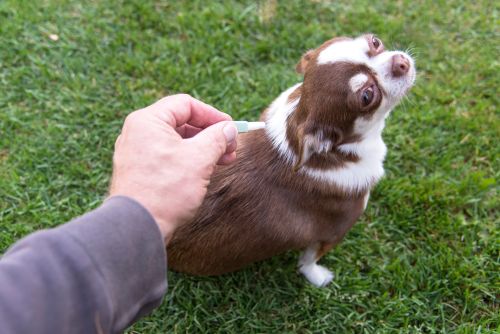
As a pet owner, you know that unfortunately, fleas are an extremely common and annoying occurrence. You probably also know how important it is to treat your dogs and cats for worms and fleas on a regular basis. However, with 95% of flea and egg larvae living in your environment rather than on your pet, it is equally, if not more important, to treat your home too, otherwise, the infestation will return time and time again.
How do I know if my pet has fleas?
It is not uncommon to be able to spot fleas jumping on and off of your pet’s body, but they are very small and very fast. They are flat-bodied, dark brown or black in color (unless they are full of blood in which case they can be a lighter color) and are usually less than an eighth of an inch big. Typical behavioral symptoms that your pet might display include restlessness and chewing, scratching or licking certain parts of their body more often than usual. If you suspect that your pet has fleas, you can check their skin and coat for signs of the fleas themselves or for ‘flea dirt’ which looks like regular dirt but is actually flea feces. If you aren’t sure if it is actual dirt rather than flea dirt, put some on a paper towel and add water. If it is flea dirt, then it will turn a reddish-brown color as it will contain blood that the flea has ingested and then excreted.
Finding the right treatment
With so many different flea treatments available on the market, finding the right one can be tricky which is why we have put together this list of some of the best and most effective flea treatments for dogs and cats to get you started. However, discovering which products will work best for you and your pets may require some trial and error.
Frontline® Flea Spray for Dogs and Cats
Frontline® sprays do not contain the potentially toxic insecticides found in many pet store sprays and is a one-stop-shop for any household that has both cats and dogs. It is also safe to use if you have kittens or puppies on your property and is water-resistant, so it is still effective even if you like in an area with high rainfall.
Frontline® Plus for Dogs and Cats
A topical version of Frontline®, this formula will repel fleas and other pests at all life stages for a full 30 days. This helps to prevent re-infestation and keeps your home clear of fleas for a month at a time. Like other Frontline® products, it is free of potentially harmful insecticides and is water-resistant.
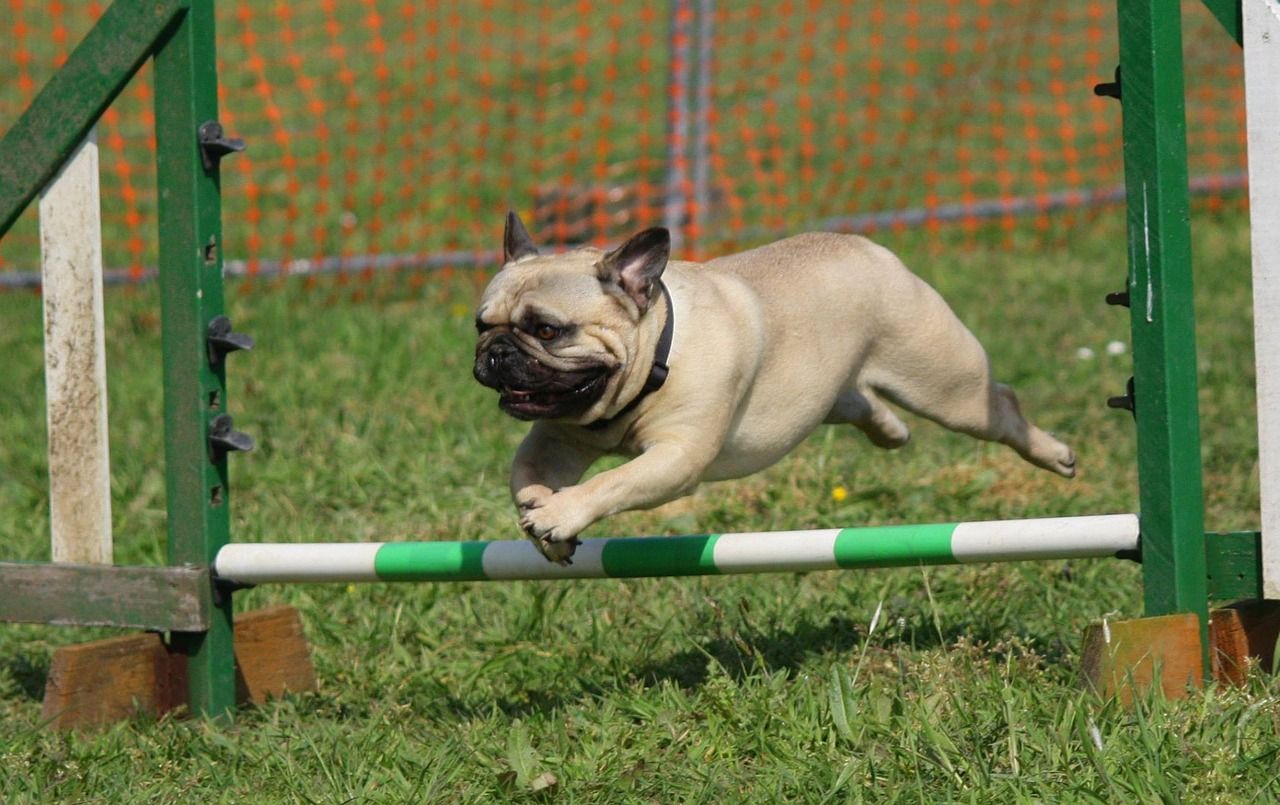
Once you have decided to make a new pet a part of your family, the first concern you should have is with making them comfortable. After your pet has settled into your home, a good next step would be to think about training which can help to ensure that the behaviors they exhibit are primarily desirable ones.
Training your Dog
Whilst dogs have earned a reputation as ‘man’s best friend’ thanks to their loyal and affectionate nature, they can sometimes possess frustrating habits or personality traits that make them difficult to live with, just like their human counterparts.
Training your dog will be hugely beneficial for your dog to learn to live harmoniously alongside his human family. It will strengthen his bond with your family and ensure his safety when out and about.
What is the best method to train my dog?
There are many different schools of thought concerning how to best train a dog. Some owners prefer strict training with punishments for non-compliance, whilst others prefer to praise positive behavior and ignore undesirable reactions. Studies have shown that as a general rule, the latter method works best, but however you decide to train your dog, you will need to consistently control the consequences of your dogs’ behavior in order for the training to be effective.
Since dogs cannot relate events that are separated by time, the consequences to negative behavior need to be immediate. Just as you cannot praise your dog several minutes after returning to you when called since he will not understand why he is receiving it. The easiest way to train a dog is to reward the behaviors that you like and not those that you don’t.
If your dog likes the reward you give them, they will be more likely to repeat that behavior so they can receive it again i.e. love, attention, and praise.
If they dislike the consequences, then they will do the behavior less often.
It really is that simple, but being consistent is vital to a successful training plan, otherwise, you will send mixed messages to your pet. For example, if you do not want your pet to jump on you (which they do to get your attention) then ignore them until they calm down. Once they have calmed down, be sure to praise and make a fuss over them. This will help them to learn that this is the way that you prefer them to behave. It may take several days or weeks of doing this, but your dog will soon learn the correct behavior to exhibit.
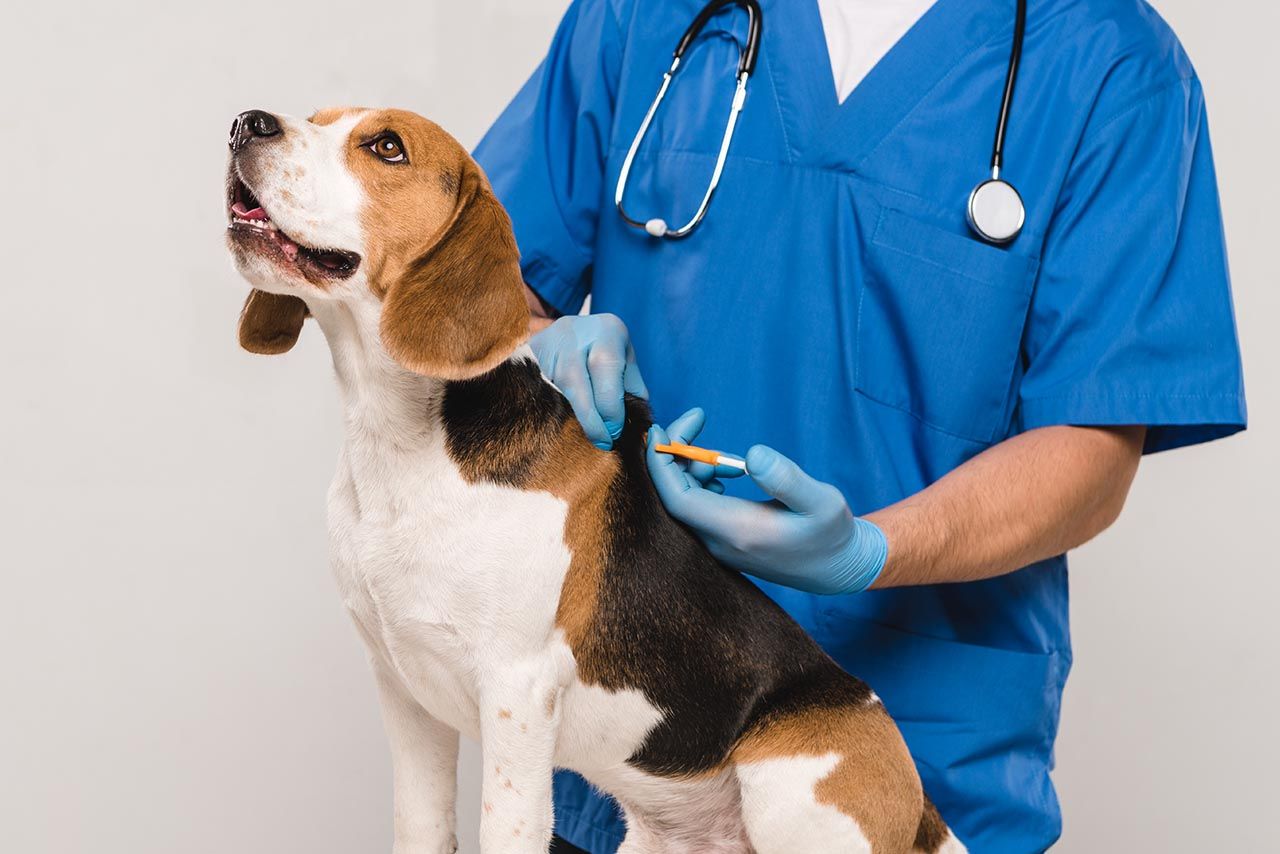
Did you know that despite doing all we can to keep our pets safe, approximately one in three pets in the United States will become lost at some point during their lifetime? This is a scenario that no owner wants to think about, but by understanding that it is something that does happen, we can be better prepared. One of the best ways of doing this is by microchipping your pet.
Why should I microchip my pet?
Many owners are quite content with using collars and tags as identification for their beloved animal. While microchipping isn’t intended to replace this traditional and highly successful practice, it can complement it. Microchips are about the size of a grain of rice and are injected under your pet’s skin. Once inserted, it is impossible to locate exactly where they are, which makes them tamper-proof and accident-proof. While conventional tags and collars can be removed by thieves or can fall off, microchipping is permanent.
Studies have shown that microchipping is also a much more effective and efficient way of reuniting pets with their owners. Since many animals look alike, ownership disputes are a fairly common occurrence in neighborhoods where there are a number of pets of the same type and breed. However, microchipping can also prove invaluable when it comes to proving who the rightful owner of your pet is. While having your details on the chip is not proof of ownership, disputes nearly always go the way of the person who is registered with the microchip provider.










